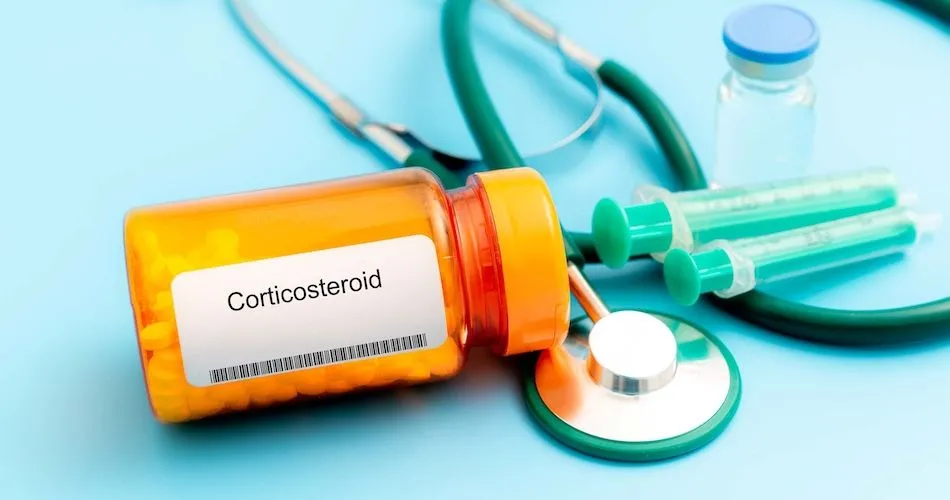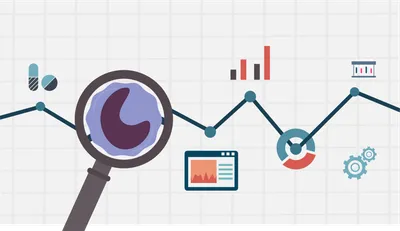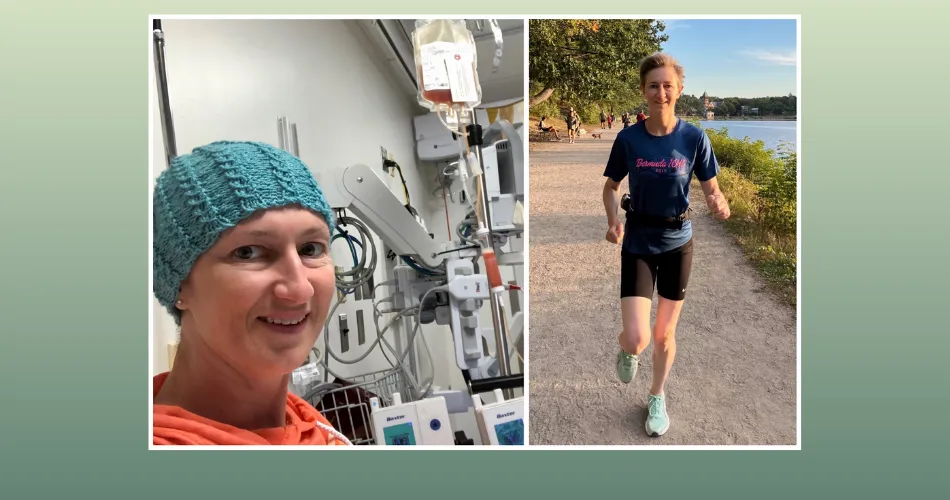What are FLT3 Inhibitors, and How are They Used in AML?

What is the FLT3 mutation in AML, and how can FLT3 inhibitors help patients? Learn answers to these questions and more below.
What is the FLT3 Mutation in AML?
The FLT3 gene, or FMS-like tyrosine kinase 3, plays a critical role in the normal development of stem cells in the bone marrow. A mutation in the FLT3 gene leads to the uncontrolled growth of white blood cells, which is characteristic of acute myeloid leukemia (AML).
FLT3 mutations are detected in about 30% of AML cases, making them the most common mutation among patients. These mutations can occur across all age groups.
There are different types of mutations in the FLT3 gene:
-
FLT3 internal tandem duplication (ITD) mutation
-
Occurs in about 20-25% of FLT3-mutated AML cases and are particularly challenging because of their increased odds of the leukemia coming back after treatment.
-
FLT3 tyrosine kinase domain (TKD) mutation
-
TKD mutations, found in about 5-10% of cases, do not significantly alter your overall prognosis but still require targeted therapy with FLT3 inhibitors.
Learn more about the FLT3 mutation by watching the HealthTree University video below!
What Tests Find FLT3 Mutations in AML?
It is important to test for the FLT3 mutation at the time of your AML diagnosis as it helps guide treatment decisions and may influence your prognosis. Genetic tests look at the genes in cells and can check for abnormalities using a blood and/or bone marrow sample.
Genetic tests like polymerase chain reaction (PCR) and next-generation DNA sequencing (NGS) are used to detect the FLT3 mutation. PCR provides quick results, which are essential for initiating appropriate treatment strategies, while NGS offers a more sensitive approach, albeit with longer turnaround times.
What are FLT3 Inhibitors for AML?
Historically, FLT3 mutations have been associated with a poor prognosis due to the aggressive nature of the mutation-enhanced leukemia cells. However, treatment advances with FLT3 inhibitors have begun to change this landscape.
FLT3 inhibitors silence the FLT3 gene, helping significantly reduce the growth of AML cells. Specialist-recommended FLT3 inhibitors include:
Midostaurin (Rydapt, Novartis) is administered as an oral tablet. It is recommended when given alongside 7+3 induction chemotherapy for newly diagnosed AML patients to improve overall survival to an average of 74.7 months. To reduce the risk of relapse, an allogeneic stem cell transplant is recommended after post-remission treatment.
Gilteritinib (Xospata, Astellas) is administered as an oral tablet continuously until it stops working for patients with relapsed/refractory FLT3-mutated AML. Based on the MORPHO study, AML patients who test positive for the FLT3 mutation using MRD testing either right before or right after stem cell transplant benefit from receiving gilteritinib as a maintenance therapy. Patients who are negative for the FLT3 mutation after MRD testing do not need gilteritinib maintenance therapy.
Quizartinib (Vanflyta, Daiichi-Sankyo) is administered as an oral tablet. It is recommended for AML patients with the FLT3 mutation when given alongside chemotherapy and then going on to transplant to improve overall survival to an average of 32 months (based on QuANTUM-First study). If patients don’t go to transplant, quizartinib should be given continuously as a maintenance therapy. Quizartinib has not proven to be effective if given after a stem cell transplant.
Crenolanib is an FLT3 inhibitor being administered in a clinical trial after induction chemotherapy and consolidation therapy for newly diagnosed AML patients. The study's outcomes were encouraging, with 96% of FLT3 mutated AML patients achieving remission, 88% of which achieved complete remission. Also, at the check-in point of 6.2 months after starting treatment, 80% of patients, on average, were still alive. To learn about the eligibility requirements to join this study, click here.
Treatment Resistance & Side Effects of FLT3 Inhibitors
FLT3 inhibitors may work initially. Over time, AML cells can develop treatment resistance, causing the inhibitors to stop working. Research is ongoing to identify ways to overcome this resistance.
Common side effects of FLT3 inhibitors include fatigue, nausea, low blood counts like decreased neutrophils and platelets, diarrhea, and fever. Talk to your doctor about ways to help reduce the impact of side effects. To learn about recommendations other patients suggest for managing treatment-related side effects or share your experience, click here.
Conclusion
In summary, FLT3 mutations in AML represent a significant challenge due to their prevalence and the aggressive nature of the resulting leukemia. Fortunately, the development of FLT3 inhibitors offers new hope for patients affected by these mutations. By targeting the faulty FLT3 gene, these inhibitors can slow the progression of the disease and improve the overall prognosis for many patients.
If you’ve been diagnosed with AML, you should get tested for FLT3 mutations as soon as possible as it can greatly influence your treatment plan and odds of survival.
While FLT3 inhibitors are a helpful tool against FLT3-mutated AML, they come with their own set of potential side effects, and treatment resistance can develop. Ongoing research and new developments in treatment strategies continue to improve the outlook for AML patients with FLT3 mutations, aiming to improve their length and health-related quality of life.
Track Your AML Genetics & Treatments in HealthTree Cure Hub
If you haven’t already, you’re invited to click the button below and gain the benefits of a free HealthTree Cure Hub account. Doing so will provide access to features like tracking your AML labs and tests, all in one place.
Track My AML Genetics & Treatments for Free
Sources:
What is the FLT3 mutation in AML, and how can FLT3 inhibitors help patients? Learn answers to these questions and more below.
What is the FLT3 Mutation in AML?
The FLT3 gene, or FMS-like tyrosine kinase 3, plays a critical role in the normal development of stem cells in the bone marrow. A mutation in the FLT3 gene leads to the uncontrolled growth of white blood cells, which is characteristic of acute myeloid leukemia (AML).
FLT3 mutations are detected in about 30% of AML cases, making them the most common mutation among patients. These mutations can occur across all age groups.
There are different types of mutations in the FLT3 gene:
-
FLT3 internal tandem duplication (ITD) mutation
-
Occurs in about 20-25% of FLT3-mutated AML cases and are particularly challenging because of their increased odds of the leukemia coming back after treatment.
-
FLT3 tyrosine kinase domain (TKD) mutation
-
TKD mutations, found in about 5-10% of cases, do not significantly alter your overall prognosis but still require targeted therapy with FLT3 inhibitors.
Learn more about the FLT3 mutation by watching the HealthTree University video below!
What Tests Find FLT3 Mutations in AML?
It is important to test for the FLT3 mutation at the time of your AML diagnosis as it helps guide treatment decisions and may influence your prognosis. Genetic tests look at the genes in cells and can check for abnormalities using a blood and/or bone marrow sample.
Genetic tests like polymerase chain reaction (PCR) and next-generation DNA sequencing (NGS) are used to detect the FLT3 mutation. PCR provides quick results, which are essential for initiating appropriate treatment strategies, while NGS offers a more sensitive approach, albeit with longer turnaround times.
What are FLT3 Inhibitors for AML?
Historically, FLT3 mutations have been associated with a poor prognosis due to the aggressive nature of the mutation-enhanced leukemia cells. However, treatment advances with FLT3 inhibitors have begun to change this landscape.
FLT3 inhibitors silence the FLT3 gene, helping significantly reduce the growth of AML cells. Specialist-recommended FLT3 inhibitors include:
Midostaurin (Rydapt, Novartis) is administered as an oral tablet. It is recommended when given alongside 7+3 induction chemotherapy for newly diagnosed AML patients to improve overall survival to an average of 74.7 months. To reduce the risk of relapse, an allogeneic stem cell transplant is recommended after post-remission treatment.
Gilteritinib (Xospata, Astellas) is administered as an oral tablet continuously until it stops working for patients with relapsed/refractory FLT3-mutated AML. Based on the MORPHO study, AML patients who test positive for the FLT3 mutation using MRD testing either right before or right after stem cell transplant benefit from receiving gilteritinib as a maintenance therapy. Patients who are negative for the FLT3 mutation after MRD testing do not need gilteritinib maintenance therapy.
Quizartinib (Vanflyta, Daiichi-Sankyo) is administered as an oral tablet. It is recommended for AML patients with the FLT3 mutation when given alongside chemotherapy and then going on to transplant to improve overall survival to an average of 32 months (based on QuANTUM-First study). If patients don’t go to transplant, quizartinib should be given continuously as a maintenance therapy. Quizartinib has not proven to be effective if given after a stem cell transplant.
Crenolanib is an FLT3 inhibitor being administered in a clinical trial after induction chemotherapy and consolidation therapy for newly diagnosed AML patients. The study's outcomes were encouraging, with 96% of FLT3 mutated AML patients achieving remission, 88% of which achieved complete remission. Also, at the check-in point of 6.2 months after starting treatment, 80% of patients, on average, were still alive. To learn about the eligibility requirements to join this study, click here.
Treatment Resistance & Side Effects of FLT3 Inhibitors
FLT3 inhibitors may work initially. Over time, AML cells can develop treatment resistance, causing the inhibitors to stop working. Research is ongoing to identify ways to overcome this resistance.
Common side effects of FLT3 inhibitors include fatigue, nausea, low blood counts like decreased neutrophils and platelets, diarrhea, and fever. Talk to your doctor about ways to help reduce the impact of side effects. To learn about recommendations other patients suggest for managing treatment-related side effects or share your experience, click here.
Conclusion
In summary, FLT3 mutations in AML represent a significant challenge due to their prevalence and the aggressive nature of the resulting leukemia. Fortunately, the development of FLT3 inhibitors offers new hope for patients affected by these mutations. By targeting the faulty FLT3 gene, these inhibitors can slow the progression of the disease and improve the overall prognosis for many patients.
If you’ve been diagnosed with AML, you should get tested for FLT3 mutations as soon as possible as it can greatly influence your treatment plan and odds of survival.
While FLT3 inhibitors are a helpful tool against FLT3-mutated AML, they come with their own set of potential side effects, and treatment resistance can develop. Ongoing research and new developments in treatment strategies continue to improve the outlook for AML patients with FLT3 mutations, aiming to improve their length and health-related quality of life.
Track Your AML Genetics & Treatments in HealthTree Cure Hub
If you haven’t already, you’re invited to click the button below and gain the benefits of a free HealthTree Cure Hub account. Doing so will provide access to features like tracking your AML labs and tests, all in one place.
Track My AML Genetics & Treatments for Free
Sources:

about the author
Megan Heaps
Megan joined HealthTree in 2022. She enjoys helping patients and their care partners understand the various aspects of the cancer. This understanding enables them to better advocate for themselves and improve their treatment outcomes.
More on Core Education
Trending Articles

Get the Latest Acute Myeloid Leukemia Updates, Delivered to You.
By subscribing to the HealthTree newsletter, you'll receive the latest research, treatment updates, and expert insights to help you navigate your health.
Together we care.
Together we cure.
3x Faster.












